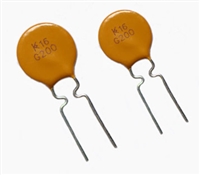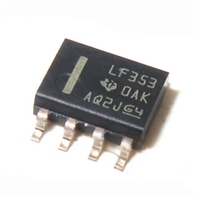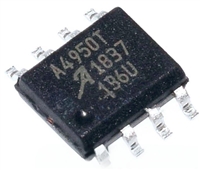LM1881
Application Notes
The LM1881 is designed to strip the synchronization signals from composite video sources that are in,
or similar to, the N.T.S.C. format. Input signals with positive polarity video (increasing signal voltage
signifies increasing scene brightness) from 0.5V (p-p) to 2V (p-p) can be accommodated. The LM1881
operates from a single supply voltage between 5V DC and 12V DC. The only required external
components besides a power supply decoupling capacitor at pin 8 and a set current decoupling capacitor
at pin 6, are the composite input coupling capacitor at pin 2 and one resistor at pin 6 that sets internal
current levels. The resistor on pin 6 (i.e. Rset) allows the LM1881 to be adjusted for source signals with
line scan frequencies differing from 15.734 kHz. Four major sync signals are available from the I/C;
composite sync including both horizontal and vertical scan timing information; a vertical sync pulse; a
burst gate or back porch clamp pulse; and an odd/even output. The odd/even output level identifies which
video field of an interlaced video source is present at the input. The outputs from the LM1881 can be used
to gen-lock video camera/VTR signals with graphics sources, provide identification of video fields for
memory storage, recover suppressed or contaminated sync signals, and pro- vide timing references for
the extraction of coded or uncoded data on specific video scan lines.
To better understand the LM1881 timing information and the type of signals that are used, refer to
Figure 1(a-e) which shows a portion of the composite video signal from the end of one field through the
beginning of the next field.
COMPOSITE SYNC OUTPUT
The composite sync output, Figure 1(b), is simply a reproduction of the signal waveform below the
composite video black level, with the video completely removed. This is obtained by clamping the video
signal sync tips to 1.5V DC at Pin 2 and using a comparator threshold set just above this voltage to strip
the sync signal, which is then buffered out to Pin 1. The threshold separation from the clamped sync tip is
nominally 70 mV which means that for the minimum input level of 0.5V (p-p), the clipping level is close to
the halfway point on the sync pulse amplitude (shown by the dashed line on Figure 1(a). This threshold
separation is independent of the signal amplitude, therefore, for a 2V (p-p) input the clipping level occurs
at 11% of the sync pulse amplitude. The charging current for the input coupling capacitor is 0.8 mA,
Normally the signal source for the LM1881 is assumed to be clean and relatively noise-free, but some
sources may have excessive video peaking, causing high frequency video and chroma components to
extend below the black level refer- ence. Some video discs keep the chroma burst pulse present
throughout the vertical blanking period so that the burst actually appears on the sync tips for three line
periods instead of at black level. A clean composite sync signal can be generated from these sources by
filtering the input signal. When the source impedance is low, typically 75Ω, a 620Ω resistor in series with
the source and a 510 pF capacitor to ground will form a low pass filter with a corner frequency of 500 kHz.
This bandwidth is more than sufficient to pass the sync pulse portion of the waveform; however, any
subcarrier content in the signal will be attenuated by almost 18 dB, effectively taking it below the
comparator threshold. Filtering will also help if the source is contaminated with thermal noise. The output
waveforms will become delayed from be- tween 40 ns to as much as 200 ns due to this filter. This much
delay will not usually be significant but it does contribute to the sync delay produced by any additional
signal processing. Since the original video may also undergo processing, the need for time delay
correction will depend on the total system, not just the sync stripper.
http://www.hgsemi.com.cn
2016 MAR
5 / 17






 NTC热敏电阻与PTC热敏电阻的应用原理及应用范围
NTC热敏电阻与PTC热敏电阻的应用原理及应用范围

 GTO与普通晶闸管相比为什么可以自关断?为什么普通晶闸管不能呢?从GTO原理、应用范围带你了解原因及推荐型号
GTO与普通晶闸管相比为什么可以自关断?为什么普通晶闸管不能呢?从GTO原理、应用范围带你了解原因及推荐型号

 LF353数据手册解读:特性、应用、封装、引脚说明、电气参数及替换型号推荐
LF353数据手册解读:特性、应用、封装、引脚说明、电气参数及替换型号推荐

 A4950资料手册解读:特性、应用、封装、引脚功能、电气参数及代换型号
A4950资料手册解读:特性、应用、封装、引脚功能、电气参数及代换型号
